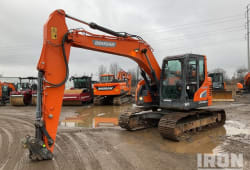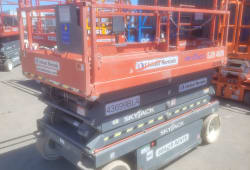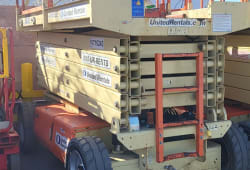Construction Staking: Surveying, Methods, Calculators & Why It Matters
4 Min read
)
July 23, 2025
When it comes to bringing a building plan to life, few steps are as critical as construction staking. This precise surveying process ensures that every structure is built exactly where it's supposed to be-down to the inch. From site prep to final placement, construction staking is the bridge between blueprints and reality.
In this article, we’ll break down what construction staking is, the types of staking methods, why it matters, and how construction staking calculators can streamline the process.
What Is Staking in Construction?
Construction staking (also known as site staking or layout staking) is the process of placing physical markers on a construction site to represent the exact location and dimensions of planned structures.
Surveyors interpret construction drawings and mark where foundations, utilities, roads, and other elements will go. These stakes guide excavators, concrete crews, and other trades during every stage of the build.
Why It Matters:
If a building is even a few feet off its planned location, it can cause compliance issues, utility conflicts, and expensive rework. That’s why construction staking is essential to avoid costly mistakes.
Construction Staking Surveying Explained
Construction staking surveying combines civil engineering plans with fieldwork. Licensed surveyors use tools like total stations, GPS, and robotic equipment to transfer digital plans onto the physical jobsite.
Here's how it typically works:
Surveyor receives the project plans from the engineer or architect.
Data is loaded into surveying software and reviewed.
Surveyors go on-site and physically stake out key points using wooden or metal stakes, flags, or spray paint.
Field notes and reports are shared with contractors to confirm layout.
This process ensures builders are working from precise, real-world points-not just drawings.
Common Construction Staking Methods
:format(webp))
Not all staking is the same. Different types are used depending on the construction phase and the specific needs of the project:
1. Rough Grade Staking
Used in early site prep. It shows approximate locations of roads, buildings, and grading.
2. Slope Staking
Helps grade crews shape the land by marking where cuts and fills are needed.
3. Offset Staking
Instead of placing stakes directly where the structure will go, they are placed to the side. This allows work to happen without disturbing the markers.
4. Utility Staking
Shows where underground utilities-like sewer, gas, and water lines-should be placed.
5. Curb and Gutter Staking
Used in road and subdivision construction to align curbs, gutters, and sidewalks.
6. Building/Structure Staking
The most precise form of staking, showing exactly where a foundation or wall will be built.
Each method plays a key role at different stages and helps maintain control over the layout.
Using a Construction Staking Calculator
A construction staking calculator is a digital tool used to assist in determining the exact placement of points based on construction drawings. These calculators help surveyors and contractors work faster and with greater confidence.
What It Can Do:
Calculate horizontal and vertical coordinates
Generate offset and slope data
Estimate distances and angles
Integrate with AutoCAD or Civil 3D software
Many advanced calculators also work with GPS data, making field layout more efficient and accurate. Some popular tools include Trimble Business Center, Leica Infinity, and Carlson Survey.
Construction Staking Importance
Construction staking is not just a technical requirement-it's a cornerstone of successful project execution. Here's why it matters:
Improves accuracy and reduces human error
Prevents costly rework and legal issues from zoning or boundary disputes
Keeps contractors and crews aligned on where to dig, build, or install
Saves time by avoiding confusion or layout delays
Ensures code and regulation compliance
Whether you're building a house, highway, or hospital, staking provides the critical guideposts needed to move from plan to reality.
Final Thoughts
Construction staking is a must-have on any jobsite. It transforms abstract plans into physical guides, ensuring every inch of your project is accurate and compliant. From understanding staking methods to using advanced calculators, modern construction teams rely on staking to keep things on track.
If you're planning a new project, make sure construction staking is part of your checklist-and partner with experienced surveyors who can deliver precision from the ground up.














